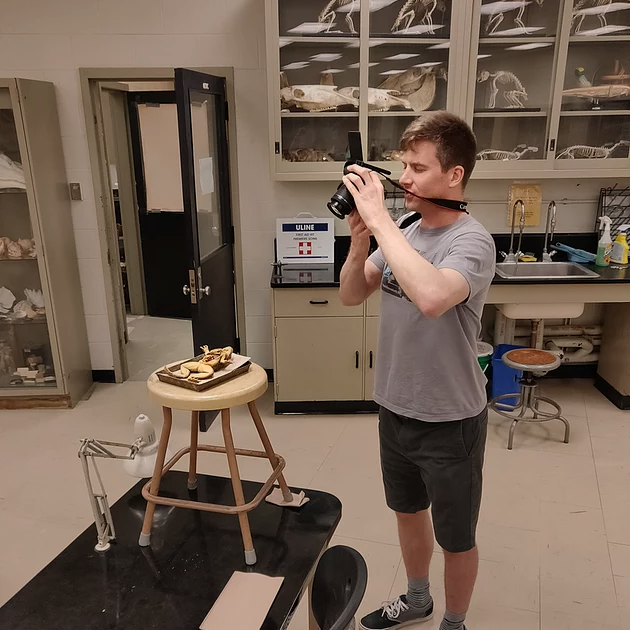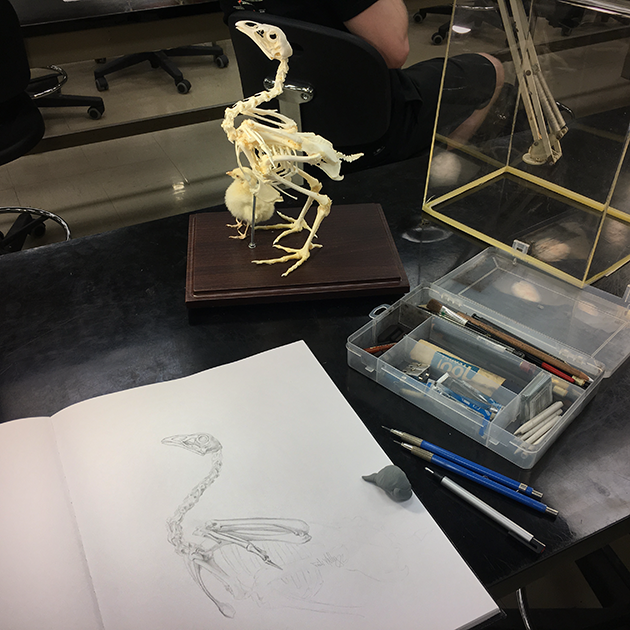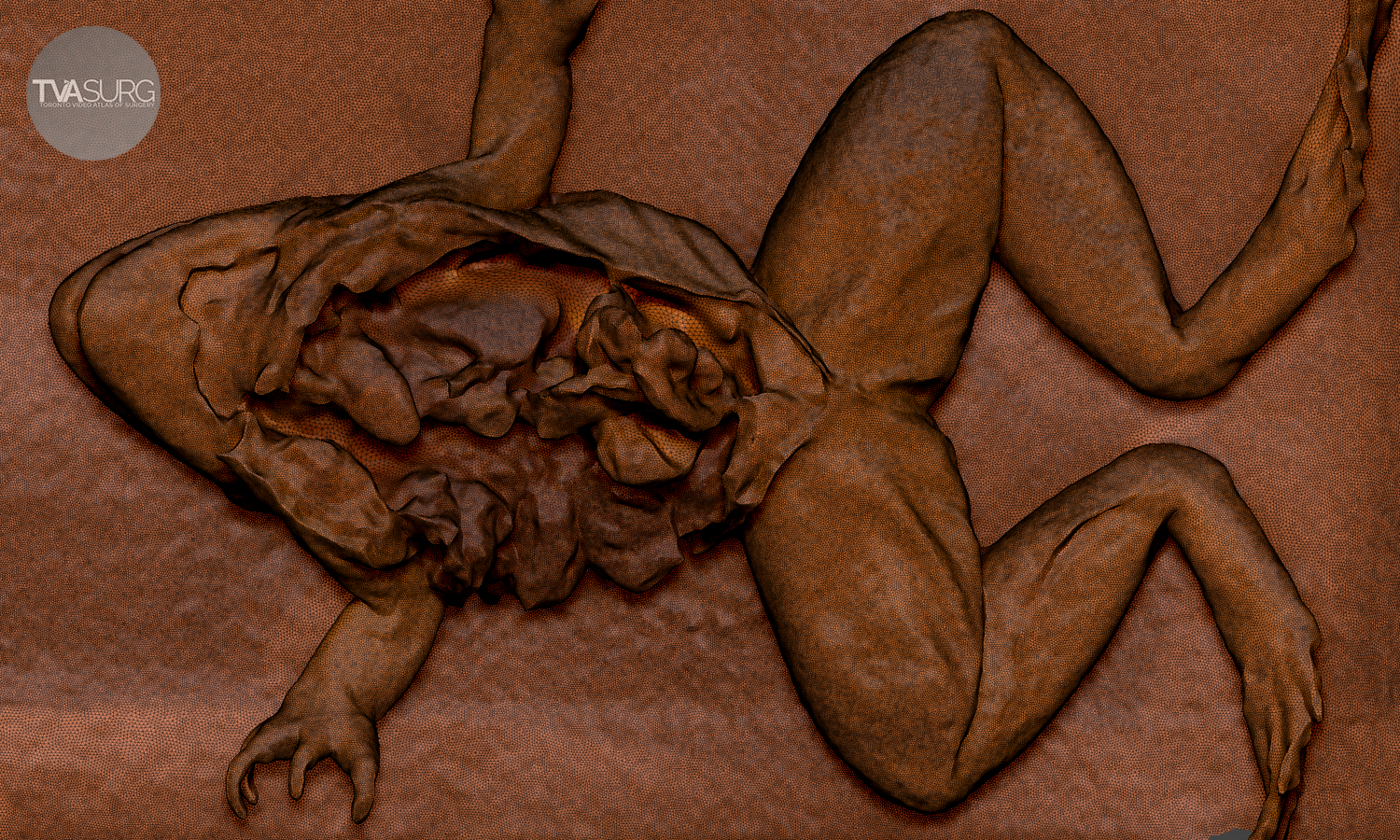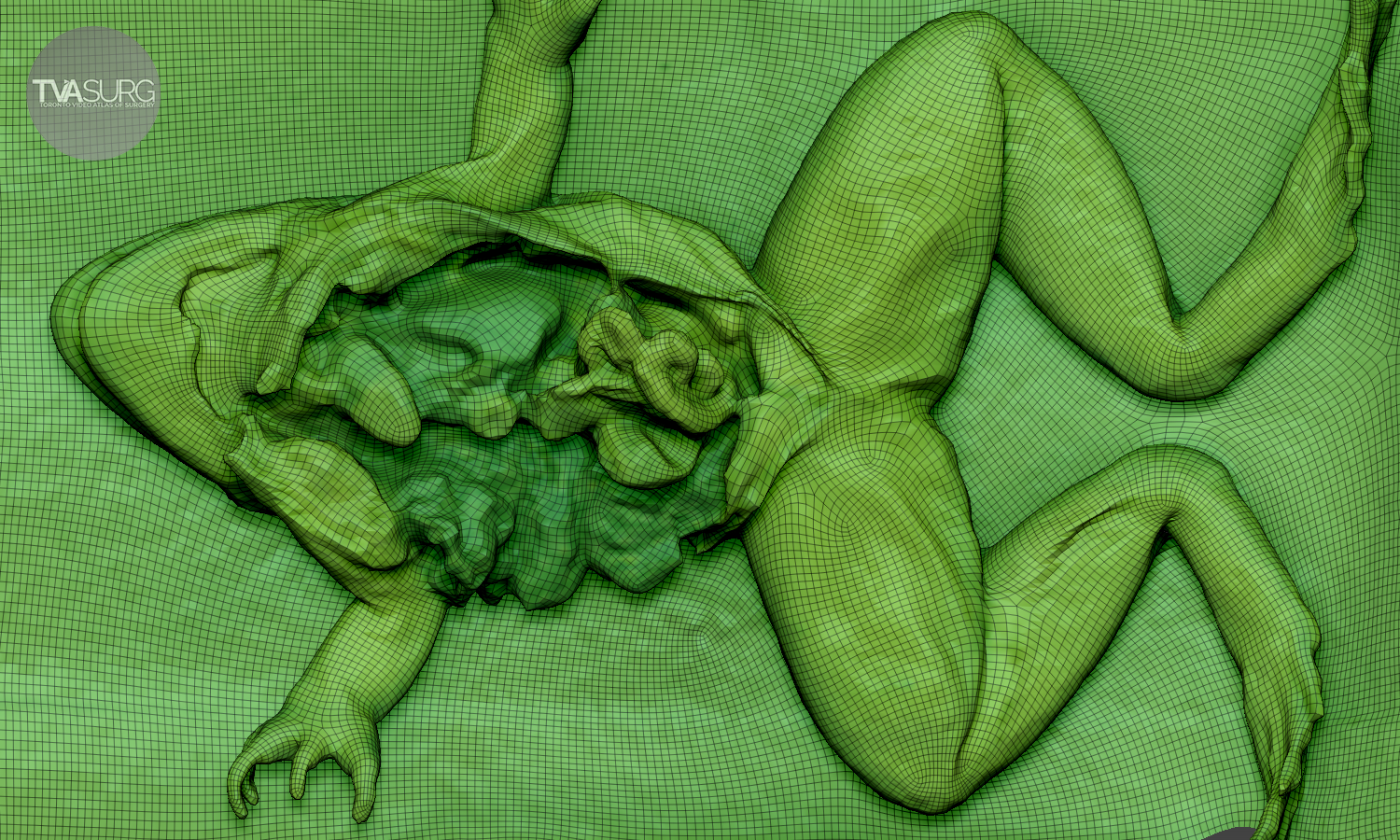In our most recent experiment in photogrammetry, we continue to refine our process for producing 3D models that can be repurposed for VR. We've integrated new software and are happy to present a new model to our growing sample set.


For the past few years the Biomedical Communications Alumni Association has co-hosted an annual sketching day at the University of Toronto Zoology labs with Professor Gerry De Iuliis of the department of ecology and evolutionary biology.
Last month, TVASurg member Paul Kelly was there to join the sketching session, and use the opportunity to capture photos of a dissected frog specimen for creation of a high-quality photogrammetry model. You can see the results for yourself!
Frog dissection
by TVASurg
on Sketchfab
A major advance in our process has been integrating Pixologic ZBrush into our workflow. ZBrush offers features that make optimizing model topology from photogrammetry scans a breeze! We have to give a shout out and big thanks to Wes Price from St George’s University in Grenada for his recent AMI webinar that demonstrated several of these features for retopologizing complex models. You can see in the image below the dramatic difference in surface topology that can be achieved with features such as ZRemesher and Dynamesh within Zbrush.


You might also notice that some of the fine details appear to get “smoothed out” from these retopology algorithms, but not to fear! The magic of this workflow is all about reducing the number of polygons required to hold a models’ essential form, and then bringing the fine surface details back with texture maps. UV-mapping the model is the critical step in this process, and ZBrush makes that easy as well.
Stay tuned for future blog posts on photogrammetry, where we’ll explore the utilization of texture maps further. Hope you’re having a great summer!
–TVASurg Team
